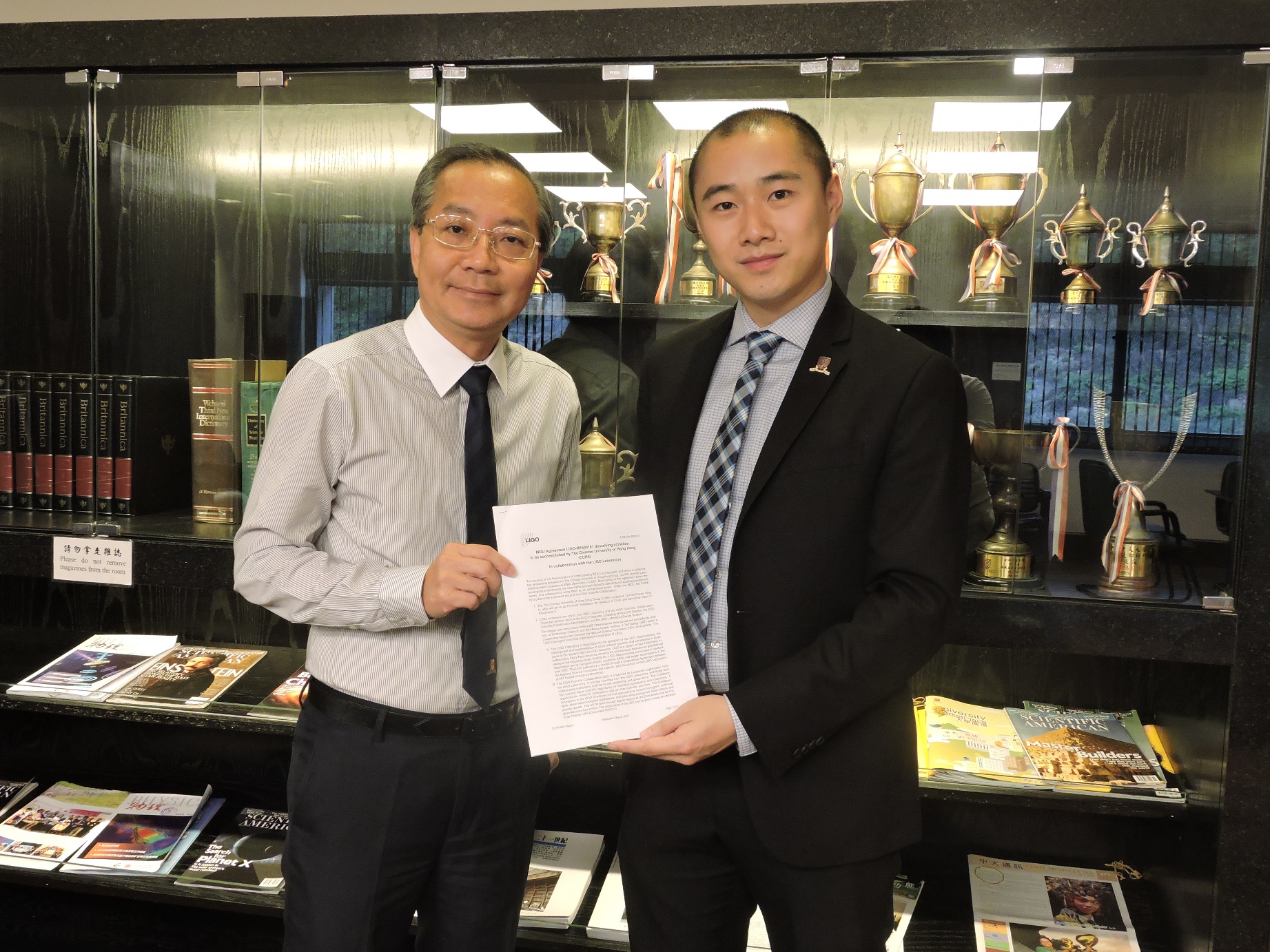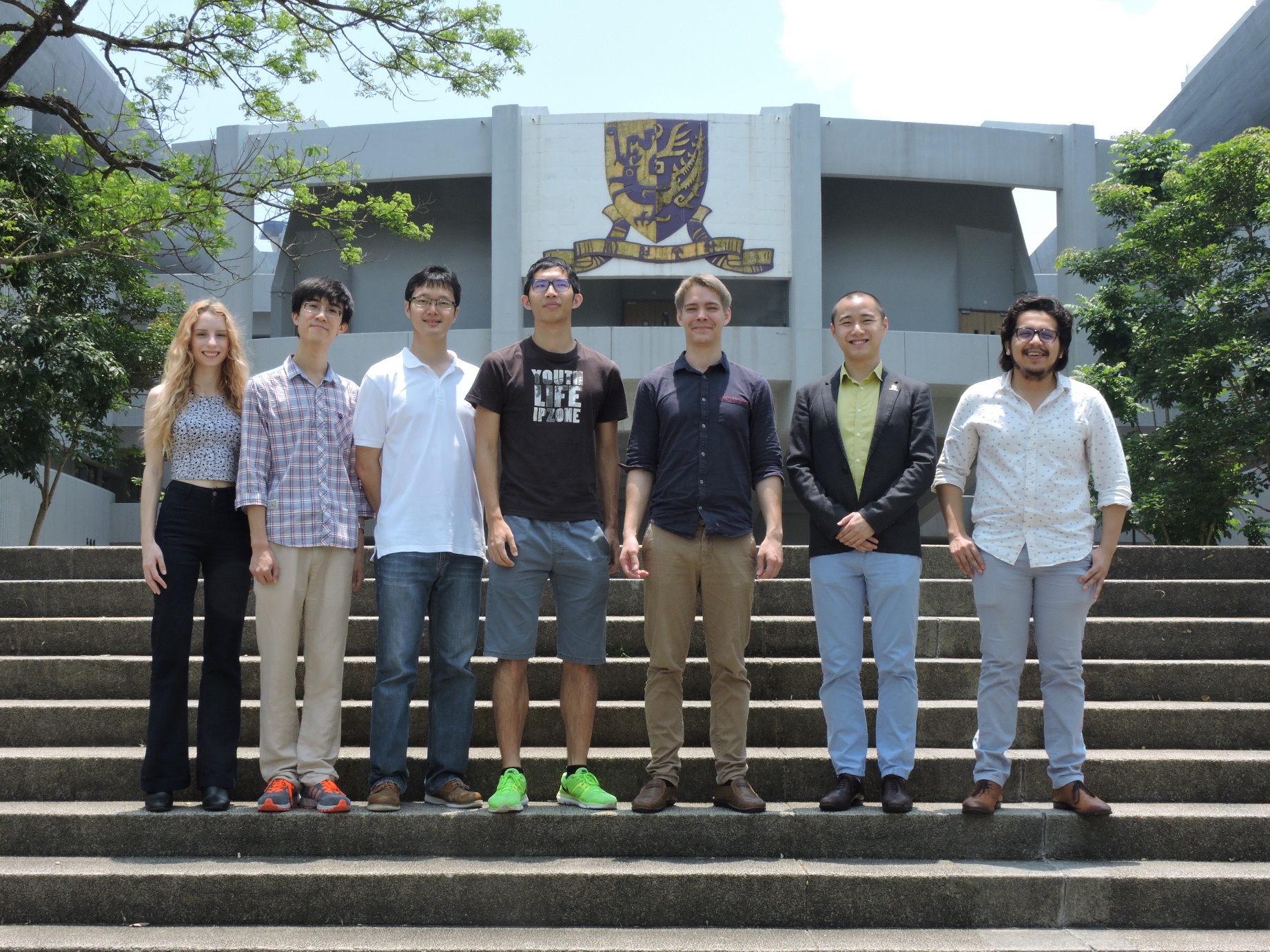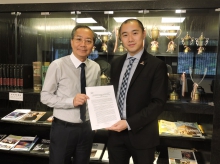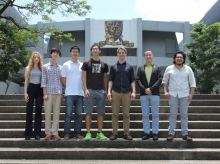CUHK
News Centre
CUHK Into Gravitational Wave Detection: Becomes First Hong Kong Member of LIGO
The Chinese University of Hong Kong (CUHK) has recently signed a memorandum of understanding to become the first Hong Kong member of the Laser Interferometer Gravitational-wave Observatory (LIGO) Scientific Collaboration. The collaboration comprises more than 1,000 scientists from dozens of institutions and 15 countries worldwide and carries out the science of the LIGO Observatories, kilometre-scale interferometric gravitational-wave detectors, located in Hanford, Washington and Livingston, Louisiana.
In February this year, LIGO announced the detection of gravitational waves emitted by two colliding black holes 1.3 billion years ago. The discovery is the first direct detection of gravitational waves and has opened up a new window on the Universe. The momentous discovery has already earned the LIGO team two prestigious scientific awards recently, namely the Special Breakthrough Prize in Fundamental Physics (announced on 2 May) and the 2016 Gruber Foundation Cosmology Prize (announced on 4 May). Both awards are conferred in recognition of groundbreaking and extraordinary scientific achievements.
Prof. Tjonnie G. F. LI, Research Assistant Professor at CUHK Department of Physics has been involved with the work of LIGO since 2009, and is currently the only scientist from a Hong Kong institution to be part of it. He will head the gravitational-wave group at CUHK. He said, ‘I am very excited to bring this line of research to Hong Kong. LIGO has provided us with a whole new way of studying the Universe, and more amazing discoveries are to be expected. The partnership between CUHK and LIGO provides us with the opportunities to work at the forefront of gravitational physics, and connects us to a world-wide network of top scientists.’
By becoming a member of LIGO, CUHK will have access to the data from the LIGO detectors and its sister experiment, the Virgo Collaboration. Researchers at CUHK will be able to exchange knowledge amongst the various member institutes of the collaboration. CUHK will also send members to the detectors for training and operations. Last summer, an undergraduate Physics student joined Prof. Tjonnie Li’s research work in LIGO in Caltech, and another undergraduate student will undertake a summer research project there this summer.
The existence of gravitational waves is one of the most important predictions proposed by Albert Einstein a century ago in his theory of General Relativity. Gravitational waves are ripples in the fabric of spacetime that are produced by violent astrophysical phenomena. Stephen Hawking, a past winner of the Special Breakthrough Prize and a member of the selection committee for the prize this year, said, ‘The discovery of gravitational waves has huge significance: firstly, as evidence for general relativity and its predictions of black hole interactions, and secondly as the beginning of a new astronomy that will reveal the universe through a different medium.’
About CUHK Physics
The Department of Physics at CUHK was established in 1963 to contribute to the understanding and applications of the fascinating facets of nature. The Department provides students with a number of special programmes to enrich both academic and extra-curricular studies.. The Enrichment Stream in Theoretical Physics was launched in 2015 and places special emphasis on project learning and building research capabilities of students with a good foundation in secondary school physics and mathematics. The Stream is particularly designed for students seeking postgraduate studies at the master’s or doctoral level upon graduation. (Please visit: http://www.phy.cuhk.edu.hk/index.html)
About LIGO
LIGO was launched in 2001 with substantial funding from the US National Science Foundation to detect gravitational waves, and was conceived, built, and operated by Caltech and MIT. The LIGO Scientific Collaboration comprises more than 1,000 scientists from over 90 universities and research institutes worldwide to develop detector technology and analyse data. LIGO completed its major upgrade to Advanced LIGO in 2015 which greatly increases the sensitivity of the instruments, enabling a large increase in the volume of the universe probed—and the discovery of gravitational waves during its first observation run. (Please visit http://www.ligo.org/)
CUHK has signed MOU to become the first Hong Kong member of LIGO Scientific Collaboration. (Left) Prof. Dickon H.L. NG, Chairman, Department of Physics, and Prof. Tjonnie G. F. LI.





